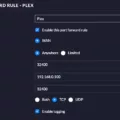Oculus Air Link is a convenient feature that allows you to wirelessly connect your Oculus Quest 2 headset to your PC for a more immersive gaming experience. However, some users have reported lag or low FPS issues while using Air Link, which can be quite frustrating. If you’re facing similar problems, don’t worry, as there are several steps you can take to improve your setup and potentially resolve these issues.
First and foremost, it’s essential to ensure that your wireless connectivity is strong and stable. One effective way to achieve this is by connecting your PC to the router using an Ethernet cable. This eliminates any potential interference or latency caused by a wireless connection. By directly connecting your PC to the router, you can experience a significant improvement in performance.
To optimize your wireless connection further, here are some additional steps you can take:
1. Disconnect your PC from any wireless connection to the router, and only rely on the Ethernet cable for internet connectivity. This ensures that your PC isn’t using any conflicting wireless connections that might affect Air Link performance.
2. Change the network mode of your router to 802.11ac or 802.11ax only. These newer Wi-Fi standards provide faster and more reliable connections, which can help reduce lag and improve overall performance.
3. Find the least congested Wi-Fi network channel in your area. Many routers have an option to scan for the least crowded channel, which can minimize interference from other devices and networks. This can lead to a more stable and smoother Air Link experience.
4. Adjust the channel width of your Wi-Fi network to either 40 or 80 MHz. Increasing the channel width can potentially increase the data transfer rate, resulting in better streaming performance for Air Link.
5. Disable the Smart Connect feature on your router, if available. Smart Connect automatically assigns devices to different Wi-Fi bands based on their signal strength, but this may not always work optimally for Air Link. Disabling it allows you to manually choose the best Wi-Fi band for your PC and headset.
6. If your router has Quality of Service (QoS) settings, consider disabling it. While QoS can prioritize certain devices or applications, it may inadvertently cause latency or performance issues for Air Link. Disabling QoS ensures that your PC and headset receive equal bandwidth and can help eliminate any potential bottlenecks.
By following these steps and optimizing your network setup, you can greatly improve the performance of Oculus Air Link and minimize lag or low FPS issues. Remember, a stable and strong wireless connection is crucial for a smooth and enjoyable VR gaming experience.

Why is Air Link So Laggy?
Air Link can experience lag for a variety of reasons. Here are some possible causes:
1. Wireless Connectivity: Air Link relies on a strong and stable wireless connection between your Oculus Quest 2 headset and your PC. If you have a weak Wi-Fi signal or there is interference from other devices, it can lead to laggy performance. Ensure that you have a reliable Wi-Fi network and minimize interference by keeping your headset and PC close to the router, avoiding obstacles, and reducing the number of wireless devices in use.
2. PC Performance: Air Link requires your PC to meet certain hardware and software requirements to ensure smooth performance. If your PC doesn’t meet these requirements or if it’s running resource-intensive applications in the background, it can result in lag. Make sure your PC meets the recommended specifications for Air Link and close any unnecessary applications or processes that may be using up system resources.
3. Network Congestion: If multiple devices are connected to your Wi-Fi network and using bandwidth simultaneously, it can lead to network congestion and cause lag. Try disconnecting other devices or limiting their internet usage while using Air Link to ensure a smoother experience.
4. Graphics Settings: Adjusting the graphics settings in the Oculus PC app can help improve performance. Lowering the graphics quality and reducing the rendering resolution can alleviate lag. Experiment with different settings to find a balance between visual quality and performance.
5. Software and Driver Updates: Make sure that both your Oculus Quest 2 headset and PC are running the latest software and driver updates. Oculus regularly releases updates that address bugs and improve performance, so keeping everything up to date can help mitigate lag issues.
6. Other Interfering Programs: Certain programs running on your PC, such as antivirus software or firewalls, can interfere with the connection between your headset and PC, causing lag. Temporarily disabling or configuring these programs to allow the Oculus software to function properly may help resolve the issue.
7. Network Quality: If you have a particularly slow or unreliable internet connection, it can contribute to lag when using Air Link. Consider upgrading your internet plan or contacting your service provider to address any connectivity issues.
By addressing these potential causes, you can troubleshoot and improve the lag issues you may be experiencing with Air Link.
How Do You Make Your Quest Air Link Smoother?
To make your Quest Air Link smoother, there are a few steps you can take:
1. Ensure a stable internet connection: Connect your PC to the router using an Ethernet cable instead of relying on a wireless connection. This will provide a more reliable and consistent connection, reducing latency and lag.
2. Use a high-quality USB cable: Make sure you are using a high-quality USB cable to connect your Quest to your PC. A poor-quality cable can cause connection issues and affect the overall performance.
3. Optimize your PC settings: Make sure your PC is running smoothly by closing any unnecessary background processes or applications. This will free up system resources and improve the performance of your Quest Air Link.
4. Update your drivers: Ensure that your graphics card drivers and Oculus software are up to date. Outdated drivers can cause compatibility issues and impact performance.
5. Adjust graphics settings: In the Oculus app on your PC, you can adjust the graphics settings to find the right balance between visual quality and performance. Lowering the graphics settings can help improve the smoothness of your Quest Air Link experience.
6. Minimize interference: Keep your PC and router away from other electronic devices that may cause interference, such as cordless phones or microwave ovens. This can help maintain a stable connection and reduce interruptions.
7. Close other network-intensive activities: If you have other devices or applications on your network that are using a significant amount of bandwidth, consider closing them while using Quest Air Link. This will ensure that your PC has sufficient bandwidth available for a smooth experience.
By following these steps, you should be able to improve the smoothness of your Quest Air Link connection and enhance your overall virtual reality experience.
How Do You Stop Your Airlink From Stuttering?
To address the issue of Airlink stuttering, you can try the following steps:
1. Change network mode: Ensure that your Airlink is set to either 802.11ac or 802.11ax only. This will ensure that your device is using the latest and fastest Wi-Fi standards, minimizing any potential performance issues.
2. Find the least congested Wi-Fi network channel: Use a Wi-Fi analyzer tool or app to identify the least congested channel in your area. By selecting a less crowded channel, you can reduce interference from other nearby networks and improve the overall performance of your Airlink.
3. Adjust channel width: Consider changing the channel width of your Airlink to either 40 or 80 MHz. This wider channel width allows for faster data transmission and can help optimize the performance of your device.
4. Disable Smart Connect: Smart Connect is a feature that automatically connects your device to the best available Wi-Fi band (2.4 GHz or 5 GHz). However, in some cases, this feature may cause connectivity issues. Disabling Smart Connect and manually selecting the appropriate Wi-Fi band can help improve the stability of your Airlink connection.
5. Disable Quality of Service (QoS): QoS is a feature that prioritizes network traffic, giving higher priority to certain types of data. While this can be useful in some scenarios, it may also cause stuttering or lag if not properly configured. Consider disabling QoS to see if it improves the performance of your Airlink.
By implementing these steps, you can potentially address the issue of Airlink stuttering and optimize the performance of your Wi-Fi network.
Conclusion
If you are experiencing lag or low FPS issues with Oculus Air Link, it is important to consider potential environmental factors that may be affecting your wireless connectivity. One of the most effective solutions is to connect your PC to the router using an Ethernet cable, which can significantly improve your setup. Additionally, adjusting your network settings can also help optimize your connection. Changing the network mode to 802.11ac or 802.11ax only, finding and using the least congested Wi-Fi network channel, and adjusting the channel width to 40 or 80 MHz can all contribute to a smoother experience. Disabling Smart Connect and Quality of Service (QoS) can also help eliminate any potential bottlenecks. By addressing these factors, you can minimize lag and improve the overall performance of Oculus Air Link.











